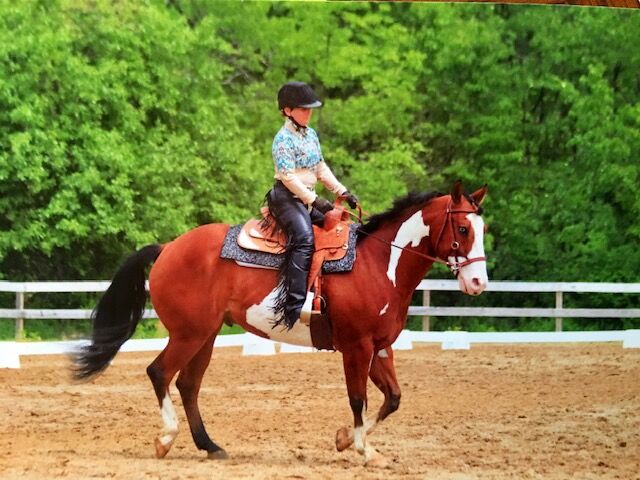The Best of Both Worlds
Interested in
Western
dressage combines the elements and principles of classic Englishdressage with the best parts of Western horseback riding tradition.
Similar to more traditional
What is Western Dressage ?
If I had a dime for every time I was asked this, I would have a lot of dimes! Western
At that time, I relied on YouTube to learn, as there were no instructors around me. Frequently, I asked friends who rode classical
dressage what things like “change rein” meant.
Today, I am happy to report there are many more western
Evolution of the Sport
Western
In 2010, the Western
Dressage Association of America was born, and westerndressage officially came into existence.
So, what exactly is western
Western
Maneuvers of the western horse are combined with the rider’s balance and the horse’s acceptance and response to the rider’s aids.
Have you ever seen old Western movies and watched how easily the cowboys can move their horses over rough terrain while herding cows? It is truly an art—the horse and rider seem to work as one. That concept is where western
While western
The horse should be allowed to move freely, but under control. Consistency, tempo, and rhythm are all emphasized. The rider should use quiet aids to effortlessly move the horse through the test. Judges look for partnership and harmony between horse and rider.
The Western Dressage Test
In Western
There are five different levels of tests that the horse and rider can progress through.
Each level has four tests, increasing in difficulty. Horsemanship skills and harmony between horse and rider are emphasized in each test and movement.
source: Kelly Bitters
Organizations
The WDAA (Western Dressage Association of America) is one of many organizations that supports and promotes western
Shortly after the WDAA was formed, a similar organization was created in Canada. The Western Style
While there are a few differences between rulebooks, the two organizations share the same goals.
Western
source: Kelly Bitters
Western Dressage Today
Western
Western
dressage classes can be found at schooling, WDAA, USEF, and breed shows.
Schooling shows are a great place to get started in the sport. These shows are very laid back, and you can get a lot of feedback on your ride. They are usually less expensive as well. Oftentimes, schooling shows are put on by an organization that may have high-point or even year-end awards.
In WDAA, USEF, and breed shows you can ride for points.
If you’re competitive and targeting a year-end award, it would be a good idea to ensure you fully understand the rules for each specific show, as they can vary slightly.
I have been privileged to ride western
source: Kelly Bitters
Frequently Asked Questions:
Q: Can you use two hands in Western dressage ?
Yes! If you’re riding in a snaffle bit, you can ride with two hands. Those using a curb bit can ride one-handed. Switching (going from one hand to two) during the test is not allowed.
Q: What is a respectable dressage score?
A score of 70% or higher is considered to be very good. If a horse/rider team is consistently scoring 60% or more, it is probably time to move up in difficulty to the next level.
Q: Can gaited horses do Western dressage ?
Yes!
Q: Is Cowboy dressage the same as Western dressage ?
Nope, pardner! Western
Q: Can you post the trot in Western dressage ?
Posting the trot (jog) is acceptable in certain Western classes, such as Western
Sources:
https://www.horsejournals.com/riding-training/english/dressage/western-dressage
https://www.westerndressageassociation.org/
About the Author
Kelley Bitter has been riding and showing horses for over 50 years. She has been training and instructing western
P.S. Enjoy this article? Trot on over to:
- Western
Dressage vs. CowboyDressage : Same Same? - The Best
Dressage Bridles - What to Know Before Buying Your First
Dressage Horse - Dressage Circle of the Aids: A Simple Explanation
- My Love Affair with
Dressage - How to Pick Your Perfect
Dressage Horse - A Horse Rookie’s Guide to
Dressage - 8 Best Horse Bridles by Use (Trail, Jump, Western, etc.)
- 5 Best Western Boots for Riding Horses & Kicking @ss
- 7 Ways to Wow Judges & Improve Your
Dressage Scores - Western Horse FAQ: What Exactly is a Bridle Horse?
